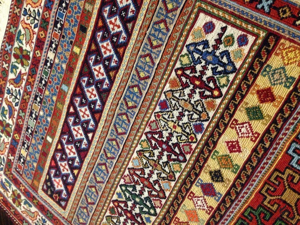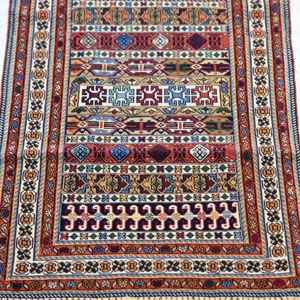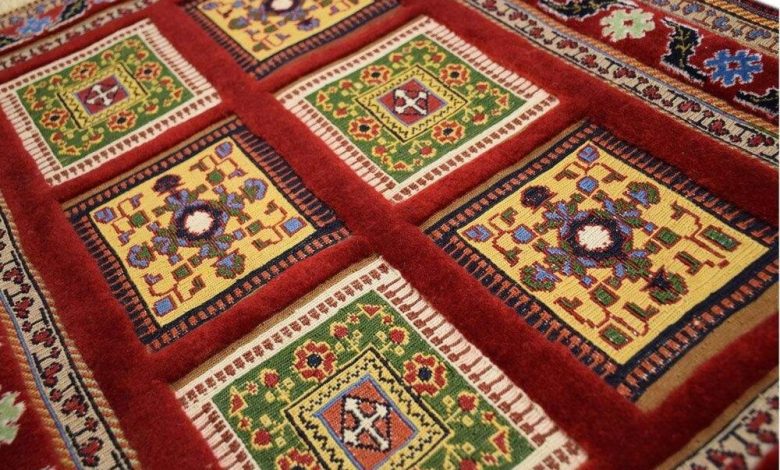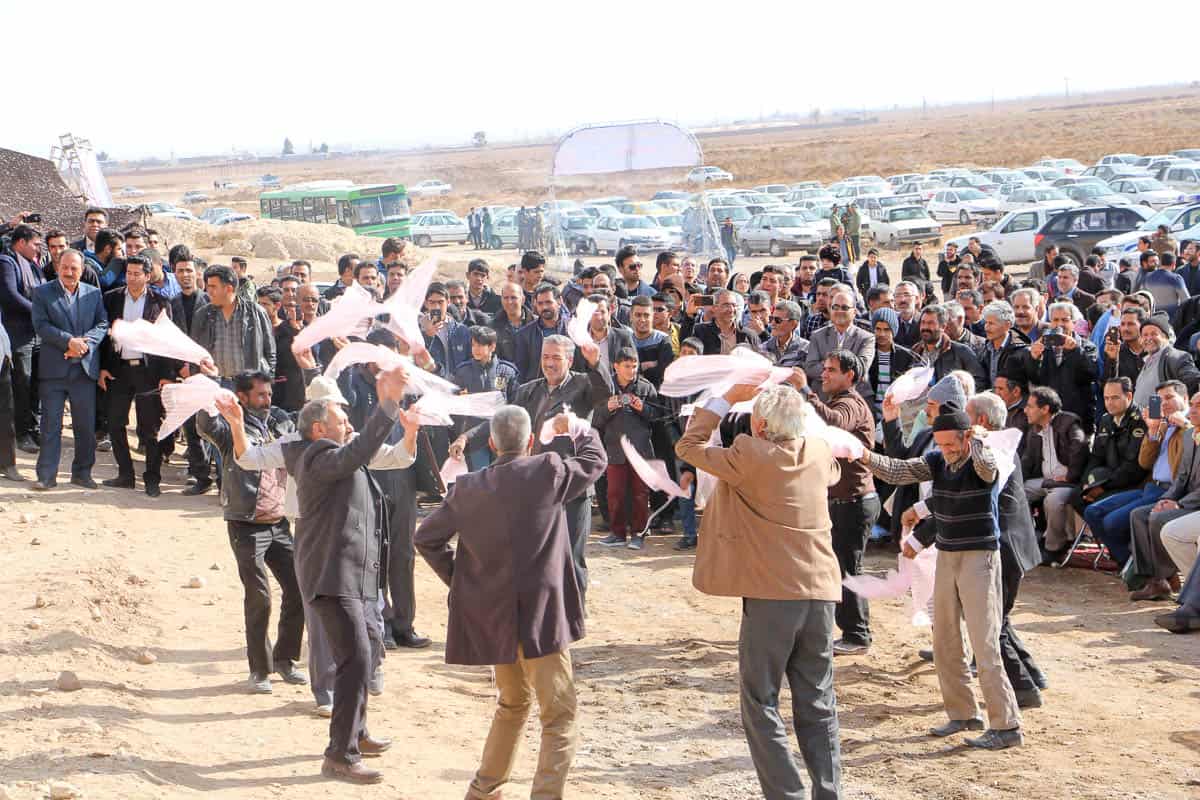Shiriki Pich Kilim; Here is the translation of your text into English, along with the conversion of Persian dates to Gregorian dates:
The Shiriki Pich Kilim, this charming artistic piece, is not just a floor covering but a treasure trove of Iranian art and culture that depicts the ancient stories of the nomads and villagers of Kerman Province. The intricate and complex weaving of this kilim, with its delicate knots and plant-based dyes, not only enhances its visual beauty but also reflects the creativity and craftsmanship of its weavers.
This kilim, known as Shiriki Pich or Suzani, has a history spanning several centuries among the nomads and villagers of Kerman. According to Dr. Rasoul Parvan, Carpet Expert, its age is over 500 years, which highlights its historical and cultural significance in the region. The geometric and semi-circular designs, sometimes deviating from symmetry, reflect the experience and creativity of the weavers. The boteh-jegheh motif with round flowers, frequently seen in these kilims, indicates the antiquity and authenticity of the design.
The chain-like borders composed of repeated geometric shapes, placed between two parallel lines, make this kilim a unique artistic piece. The Shiriki Pich Kilim, recognized as a profitable industry, is valuable not only for Sirjan County but also for the entire country of Iran. This kilim, which was part of Iran's non-oil exports in the past, is now being reintroduced to global markets with efforts to revive this art.
One of the notable features of this kilim is the extraordinary durability of its warp and weft, earning it the nickname "iron kilim." This durability results from the use of high-quality fibers and delicate weaving, making it a lasting cultural heritage.
The designs of the Shiriki Pich Kilim are not only aesthetically pleasing but also graphically valuable. These designs, based on geometric and semi-circular forms, convey deep and valuable themes and serve as inspiration for graphic designers. The designs can function as indirect logos and are highly valued for their visual and artistic intelligence. They include geometric patterns, round flowers, and traditional designs like Gol Dany, Musi Khani, and Mohremat.
One of the unique characteristics of these designs is the near absence of living animals. If an animal like a goat or bird needed to be depicted, indirect and simplified designs were used. Instead, the designs are mostly based on imaginary or semi-imaginary plants. These plants, sometimes resembling flowers or trees but with entirely imaginative shapes, reflect the creativity and imagination of the weavers. This choice indicates that the weavers aimed to create a unique artistic world rather than imitate nature.
Since the roots of this kilim are in nomadic culture, the variety of designs is vast. In older designs, it can be seen that weavers even used horse hoof prints to create patterns. This demonstrates the weavers' intelligence and creativity in depicting aspects of nomadic life. This act not only shows attention to detail but also reflects the weavers' efforts to record and reflect their daily lives in their art.
The colors used in this kilim also reflect the diversity and depth of the weavers' perspectives. The background of these kilims varies from warm lacquer reds to cool deep blues, indicating the different moods and personalities of the weavers. For example, one can distinguish a kilim woven by a young bride with cheerful personality from one by an elderly woman based on the choice of warm and cool colors. Warmer colors like red and yellow signify vitality and youth, while cooler colors like blue and green reflect calmness and experience. This variation in color selection makes the Shiriki Pich Kilim a unique artistic piece that not only has visual beauty but also contains hidden stories from the weavers' lives.
Between the 1950s and 1970s, this kilim was on the verge of being forgotten. The main reason for this neglect was the disregard for its nomadic artistic authenticity and the focus on the market for Fars region carpets. Weavers of the Shiriki Pich Kilim were also drawn to weaving Fars region carpets and continued this work for many years. However, with the establishment of a kilim weaving workshop in Darstan, the production of this unique kilim resumed, and it was revived as part of Kerman's cultural heritage.
The late Jiran Shool played a significant role in reviving this art by re-teaching and re-educating the authentic designs and weaving techniques of the Shiriki Pich Kilim. Between 1971 and 1981, he simultaneously taught this art in Rafsanjan, Kerman, Bardsir, and Sirjan, thereby playing a crucial role in preserving and reviving the Shiriki Pich Kilim. Additionally, he independently trained many students over nearly fifteen years at the Darstan kilim weaving workshop, which was established in 1975 under the direct order of Farah Pahlavi. This workshop, under the supervision of Kerman's handicrafts industry, reached its peak activity by the early 1990s, covering over 200 weavers both centrally and domestically.
This beautiful handwoven piece, using high-quality materials and plant-based dyes, is not only an artistic work but also a symbol of the indigenous identity and authenticity of Kerman Province. The Shiriki Pich Kilim, with its refined and rich designs, is recognized as a global artistic piece and preserves the stories of Kerman's nomads and villagers for future generations.
The Darstan handicraft workshop experienced a prolonged period of inactivity until the early 2010s but continued through domestic weaving workshops, ensuring that this ancestral art was not forgotten.
In 2017, with the introduction of the Shiriki Pich Kilim by evaluators from the World Crafts Council during a visit to observe its production in Darstan, this ancient and beautiful art was registered globally. In that year, Sirjan was recognized as the "Global City of Kilim," and Darstan Village was named the "Global Village of Kilim." This global registration was not only due to the authenticity and history of this art but also because of Darstan Village's crucial role in preserving and continuing the weaving of this kilim during its period of decline and teaching its authentic techniques. These efforts ensured that a new generation of weavers became familiar with this art and protected it as part of their cultural heritage.




















